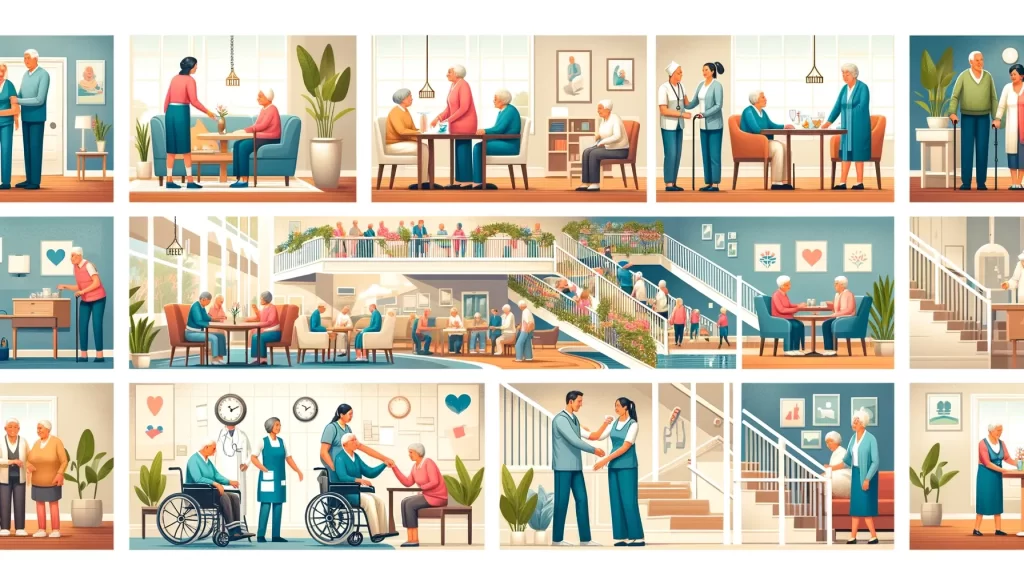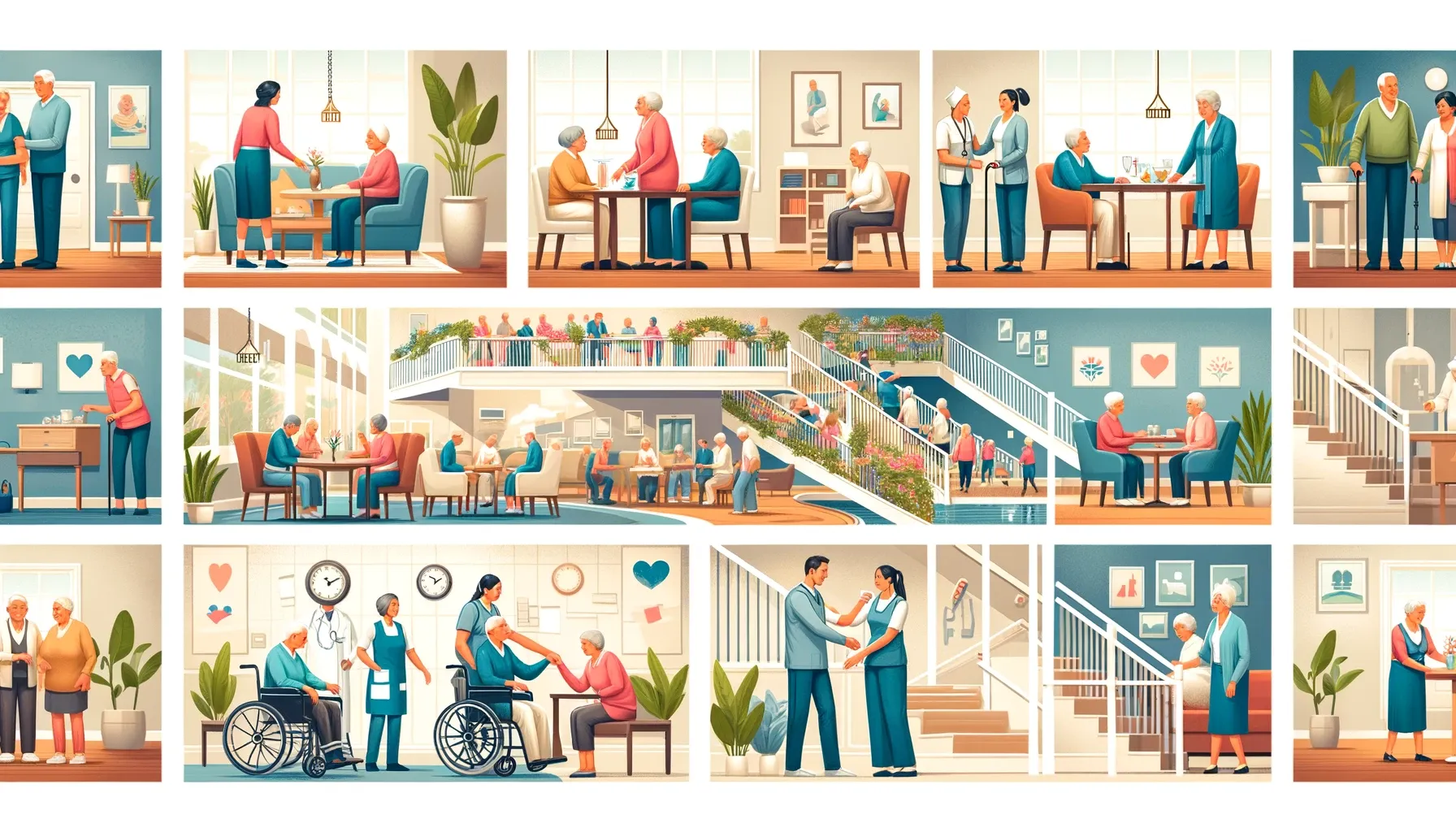Assisted living communities use levels of care to understand better how much help a senior may need with daily tasks. They’re based on results from an assessment, history, and physical and personal observations. These assessments are regularly reexamined, says Perla, who helps 300,000 families find the right senior care.
Whether independent or need higher care, most senior communities offer activities, events, and opportunities to socialize with peers. They also focus on keeping residents safe.
Level 1
While exact arrangements vary by facility, most senior living communities offer services such as a private rented apartment or suite, meals (usually one to three per day) in a communal dining setting, housekeeping and laundry services, 24-hour on-call assistance, and social and recreational activities. Some even provide a medical response system, trained nurses, and physical therapists onsite to address emergencies.
Upon move-in, residents receive a comprehensive assessment to help the community understand their needs and create an individualized care plan. Then, as needs change, the community can quickly adjust to accommodate new requirements and reduce costs by removing unnecessary services. A common example is daily medication reminders and administration. These can reduce the risk of choking or forgetting to take medications.
Level 2
At this level, a senior may have a limited range of movements and needs assistance with ADLs like bathing, dressing, and eating. They might also require one-on-one caregiver care for these tasks and need daily medication reminders.
Many assisted living communities have staff members available to help with these activities and a schedule for onsite physical and mental health therapy. They also provide meals, housekeeping, and transportation.
Most importantly, assisted living facilities can recognize when a resident’s levels of care need to change and refer them to a nursing home or other type of facility that can better meet those higher-level needs. This helps ensure the right person stays in the right place, avoiding a shift in care that could disrupt their lives.
Level 3
Many older adults who choose assisted living in Tallahassee need help performing their daily activities. This could be as simple as being reminded to take medication or bathe, but more often, it is the result of increasing injuries from falls and worsening health conditions like diabetes.
They may also need more hands-on assistance with grooming, mobility, and incontinence care. This level of care is usually found in assisted living communities with a noninvasive assessment that identifies the resident’s care needs and provides recommendations for the next steps.
Perla says that a person’s care level determines which services the facility can provide and how much they cost. It also helps administrators plan for the future by identifying those who might be better served in another type of facility, like a skilled nursing home.

Level 4
Seniors in level four care require extensive hands-on assistance with their daily activities. They often have multiple physical impairments and mild to moderate memory loss. They need regular one-on-one help with bathing, dressing, feeding, and medication management. They may also need help getting in and out of bed and being encouraged or escorted to participate in social activities. CNAs and aides provide these services under the supervision of nurses.
Although different assisted living facilities use various terms to define levels of care, they all boil down to the same spectrum. The level of care determines how much a person’s monthly fee will be. Many communities offer a la carte pricing, which allows seniors to pay only for what they need.
Level 5
If your loved one has a health condition that could worsen without the right care, it’s important to understand what type of care they can receive in an assisted living community. This will help you determine whether or not it’s a good fit for them.
Typically, people move out of assisted living and into higher levels of care like retirement homes or skilled nursing facilities when they start needing more extensive help with their ADLs than the community can provide. But with varying levels of care available, seniors can age in place safely and happily for longer.
Understanding the different levels of care available at an assisted living community can give you perspective on what types of questions to ask during a tour. It can also help you identify if a community fits you or your loved one.

